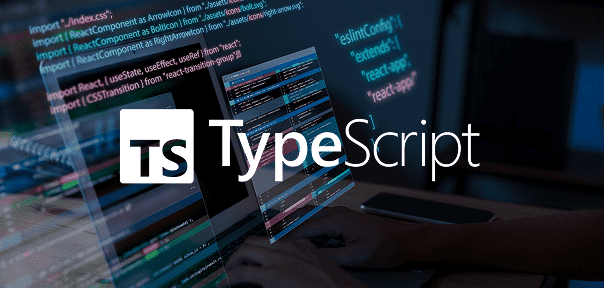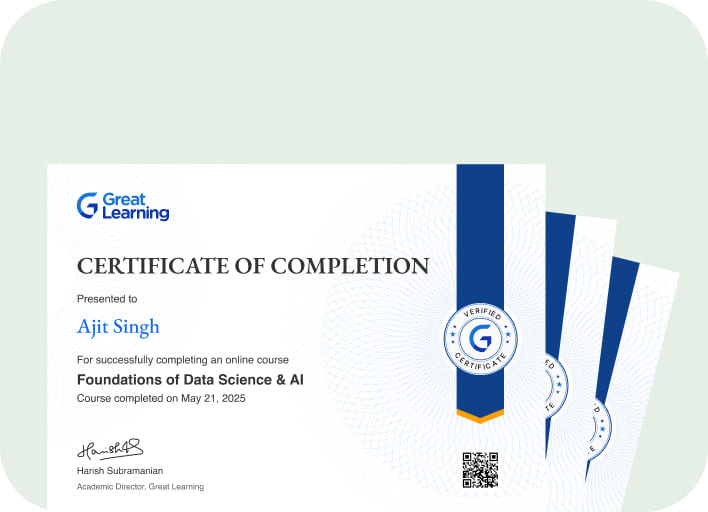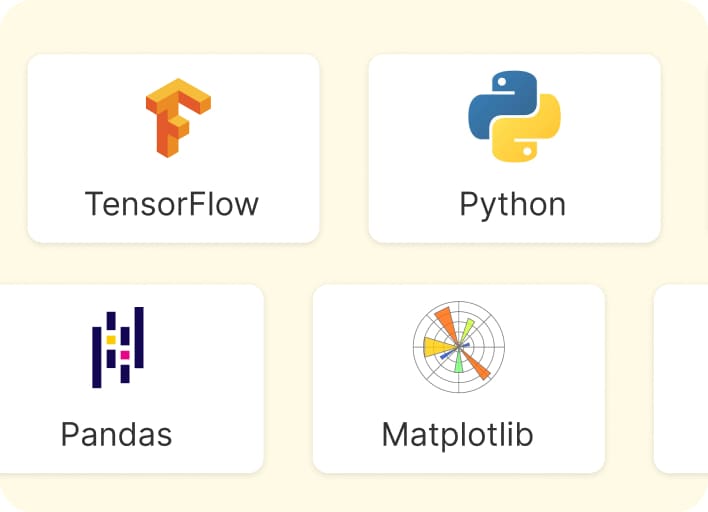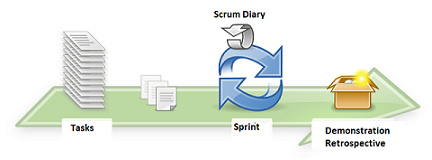- Great Learning
- Free Courses
- It & Software
Earn a certificate & get recognized
Introduction to Unit Testing
Unlock the power of code reliability! Enrol now for our free 'Introduction to Unit Testing' course. Learn essential concepts, tools, and techniques to elevate your software development skills.
Introduction to Unit Testing
1.9K+ learners enrolled so far
Stand out with an industry-recognized certificate
10,000+ certificates claimed, get yours today!
Get noticed by top recruiters
Share on professional channels
Globally recognised
Land your dream job

Skills you will gain
Understanding of Unit Testing Concepts
Proficiency in Writing Test Cases
Familiarity with Testing Frameworks
Test Driven Development (TDD) Skills
Debugging Skills
Integration of Unit Tests in CI/CD Pipelines
Code Coverage Techniques
+2 More
Key Highlights
Get free course content
Master in-demand skills & tools
Test your skills with quizzes
About this course
Embark on a journey of software quality assurance with our free course, Introduction to Unit Testing. Unveil the critical 'Need for Unit Testing' and unravel the intricacies of the 'Unit Test Life Cycle.' Equip yourself with the latest 'Unit Testing Tools' and master diverse 'Unit Testing Techniques' to fortify your code.
Explore the 'Advantages of Unit Testing' and understand how it enhances software reliability, while acknowledging the 'Disadvantages of Unit Testing' to navigate potential challenges. Elevate your programming expertise with this comprehensive course, ensuring your code stands resilient and error-free. Enroll now to unlock the power of effective unit testing in software development.
Course outline
Introduction to Unit Testing
This module offers an introduction to the essential principles and significance of Unit Testing, emphasizing how Unit Testing streamlines the software development process and enhances code quality in practical scenarios. It illustrates how Unit Testing, by isolating and verifying individual components, contributes to more reliable and maintainable applications.
Need for Unit Testing
This module delves into the necessity of Unit Testing in software engineering, highlighting its vital role in elevating the quality and reliability of software products. It elucidates how Unit Testing, by methodically examining and validating each code component, ensures the stability and functionality of applications.
Unit Test Life Cycle
This module explores the Unit Test Life Cycle in software development, underscoring its integral role in maintaining high standards of code quality and application stability. It details how the Unit Test Life Cycle systematically progresses through phases of planning, writing, executing, and reviewing tests, each critical for ensuring the thorough validation of individual code components.
Unit Testing Tools
This module provides an in-depth look at the variety of tools used in Unit Testing, emphasizing their crucial role in streamlining the testing process and enhancing the quality of software. It explains how these tools, ranging from frameworks like JUnit and NUnit to mock objects and code coverage analyzers, facilitate the planning, execution, and evaluation of tests.
Unit Testing Techniques
This module presents a detailed exploration of various techniques employed in Unit Testing, highlighting their essential role in optimizing the testing process and improving software integrity. It covers a range of methodologies from simple assertive tests to complex behavioral testing, including test-driven development (TDD), mocking, and pair programming.
Advantages of Unit Testing
This module offers an insightful examination of the numerous advantages of Unit Testing in software development, emphasizing its vital contribution to enhancing software quality and efficiency. It delves into benefits ranging from early bug detection and easier code maintenance to improved code design and faster development cycles.
Disadvantages of Unit Testing
This module offers a concise examination of the drawbacks and challenges associated with Unit Testing in software development. It addresses issues like the significant time and resource investment needed for test creation and upkeep, the risk of tests becoming outdated or inflexible, and the limitation in detecting certain errors, especially in broader integration or system contexts.
Get access to the complete curriculum once you enroll in the course
Stand out with an industry-recognized certificate
10,000+ certificates claimed, get yours today!
Get noticed by top recruiters
Share on professional channels
Globally recognised
Land your dream job

Introduction to Unit Testing

2.25 Hours
Beginner
1.9K+ learners enrolled so far
Get free course content
Master in-demand skills & tools
Test your skills with quizzes
Learner reviews of the Free Courses

5.0

5.0
What our learners enjoyed the most
Skill & tools
64% of learners found all the desired skills & tools
Frequently Asked Questions
Will I receive a certificate upon completing this free course?
Is this course free?
What prerequisites are required to enrol in this Free Unit Testing course?
You do not need any prior knowledge to enrol in this Unit Testing course.
How long does it take to complete this Free Unit Testing course?
It is a 1.5 hour long course, but it is self-paced. Once you enrol, you can take your own time to complete the course.
Will I have lifetime access to the free course?
Yes, once you enrol in the course, you will have lifetime access to any of the Great Learning Academy’s free courses. You can log in and learn whenever you want to.
Will I get a certificate after completing this Free Unit Testing course?
Yes, you will get a certificate of completion after completing all the modules and cracking the assessment.
How much does this Unit Testing course cost?
It is an entirely free course from Great Learning Academy.
Is there any limit on how many times I can take this free course?
No. There is no limit. Once you enrol in the Free Unit Testing course, you have lifetime access to it. So, you can log in anytime and learn it for free online.
Become a Skilled Professional with Pro Courses
Gain work-ready skills with guided projects, top faculty and AI tools, all at an affordable price.


View Course

Included with Pro+ Subscription

View Course

Included with Pro+ Subscription

View Course

Included with Pro+ Subscription


View Course

Included with Pro+ Subscription

View Course

Included with Pro+ Subscription


View Course

Included with Pro+ Subscription

View Course

Included with Pro+ Subscription
.jpg)
View Course

Included with Pro+ Subscription


View Course

Included with Pro+ Subscription


View Course

Included with Pro+ Subscription


View Course

Included with Pro+ Subscription


View Course

Included with Pro+ Subscription


View Course

Included with Pro+ Subscription


.jpg)
View Course

Included with Pro+ Subscription
.png)
View Course

Included with Pro+ Subscription

View Course

Included with Pro+ Subscription

View Course

Included with Pro+ Subscription

View Course

Included with Pro+ Subscription

View Course

Included with Pro+ Subscription

View Course

Included with Pro+ Subscription

View Course

Included with Pro+ Subscription


View Course

Included with Pro+ Subscription

View Course

Included with Pro+ Subscription

View Course

Included with Pro+ Subscription
.png)
View Course

Included with Pro+ Subscription

View Course

Included with Pro+ Subscription

View Course

Included with Pro+ Subscription

View Course

Included with Pro+ Subscription

View Course

Included with Pro+ Subscription

View Course

Included with Pro+ Subscription

View Course

Included with Pro+ Subscription
.jpg)
View Course

Included with Pro+ Subscription
.jpg)
View Course

Included with Pro+ Subscription
.jpeg)
View Course

Included with Pro+ Subscription
.jpg)
View Course

Included with Pro+ Subscription


View Course

Included with Pro+ Subscription


View Course

Included with Pro+ Subscription


View Course

Included with Pro+ Subscription
.png)
View Course

Included with Pro+ Subscription
.jpg)

.jpg)

.png)

View Course

Included with Pro+ Subscription


View Course

Included with Pro+ Subscription

View Course

Included with Pro+ Subscription

View Course

Included with Pro+ Subscription
.png)
View Course

Included with Pro+ Subscription
.png)
View Course

Included with Pro+ Subscription
.png)
View Course

Included with Pro+ Subscription

View Course

Included with Pro+ Subscription

View Course

Included with Pro+ Subscription

View Course

Included with Pro+ Subscription
.jpg)
View Course

Included with Pro+ Subscription

View Course

Included with Pro+ Subscription


View Course

Included with Pro+ Subscription


Popular


View Course

Included with Pro+ Subscription

View Course

Included with Pro+ Subscription

View Course

Included with Pro+ Subscription


View Course

Included with Pro+ Subscription

View Course

Included with Pro+ Subscription


View Course

Included with Pro+ Subscription

View Course

Included with Pro+ Subscription
.jpg)
View Course

Included with Pro+ Subscription
Microsoft Courses


View Course

Included with Pro+ Subscription


View Course

Included with Pro+ Subscription


View Course

Included with Pro+ Subscription


View Course

Included with Pro+ Subscription


View Course

Included with Pro+ Subscription


IT & Software
.jpg)
View Course

Included with Pro+ Subscription
.png)
View Course

Included with Pro+ Subscription

View Course

Included with Pro+ Subscription

View Course

Included with Pro+ Subscription

View Course

Included with Pro+ Subscription

View Course

Included with Pro+ Subscription

View Course

Included with Pro+ Subscription

View Course

Included with Pro+ Subscription
.png)
View Course

Included with Pro+ Subscription
.png)
View Course

Included with Pro+ Subscription

View Course

Included with Pro+ Subscription

View Course

Included with Pro+ Subscription

View Course

Included with Pro+ Subscription

View Course

Included with Pro+ Subscription

View Course

Included with Pro+ Subscription


View Course

Included with Pro+ Subscription

View Course

Included with Pro+ Subscription

View Course

Included with Pro+ Subscription


View Course

Included with Pro+ Subscription


View Course

Included with Pro+ Subscription
 (1).png)
View Course

Included with Pro+ Subscription
Data Science & ML


View Course

Included with Pro+ Subscription

View Course

Included with Pro+ Subscription

View Course

Included with Pro+ Subscription
.png)
View Course

Included with Pro+ Subscription

View Course

Included with Pro+ Subscription

View Course

Included with Pro+ Subscription
Management

View Course

Included with Pro+ Subscription

View Course

Included with Pro+ Subscription

View Course

Included with Pro+ Subscription

View Course

Included with Pro+ Subscription
.jpg)
View Course

Included with Pro+ Subscription
.jpg)
View Course

Included with Pro+ Subscription
.jpeg)
View Course

Included with Pro+ Subscription
.jpg)
View Course

Included with Pro+ Subscription
.png)
View Course

Included with Pro+ Subscription
.png)
View Course

Included with Pro+ Subscription
.png)
View Course

Included with Pro+ Subscription
.png)
View Course

Included with Pro+ Subscription

View Course

Included with Pro+ Subscription
.png)
View Course

Included with Pro+ Subscription
 (1).jpg)
View Course

Included with Pro+ Subscription
.png)
View Course

Included with Pro+ Subscription
Cloud Computing


View Course

Included with Pro+ Subscription


View Course

Included with Pro+ Subscription


View Course

Included with Pro+ Subscription
.png)
View Course

Included with Pro+ Subscription
.jpg)

.jpg)

.png)

View Course

Included with Pro+ Subscription


View Course

Included with Pro+ Subscription

View Course

Included with Pro+ Subscription
.png)



.png)

View Course

Included with Pro+ Subscription



Cyber Security

View Course

Included with Pro+ Subscription

View Course

Included with Pro+ Subscription
.png)
View Course

Included with Pro+ Subscription
.png)
View Course

Included with Pro+ Subscription
.png)
View Course

Included with Pro+ Subscription
AI & Generative AI

View Course

Included with Pro+ Subscription

View Course

Included with Pro+ Subscription

View Course

Included with Pro+ Subscription
.jpg)
View Course

Included with Pro+ Subscription

View Course

Included with Pro+ Subscription


View Course

Included with Pro+ Subscription


Subscribe to Academy Pro+ & get exclusive features
$25/month
No credit card required

Learn from 40+ Pro courses

Access 500+ certificates for free

700+ Practice exercises & guided projects

Prep with AI mock interviews & resume builder
Recommended Free Software courses




Similar courses you might like










